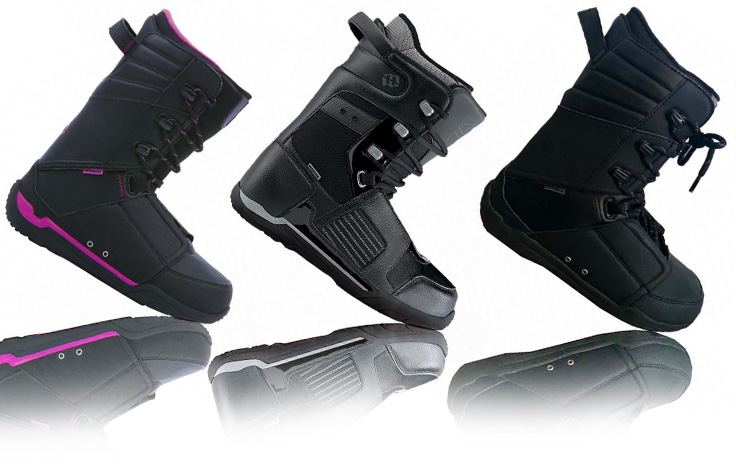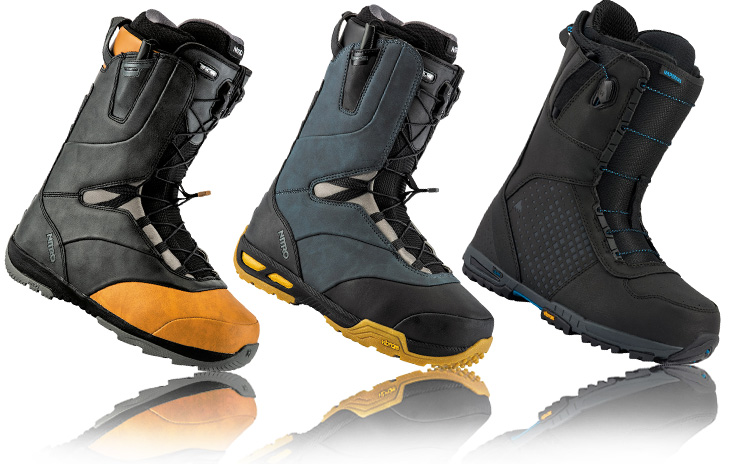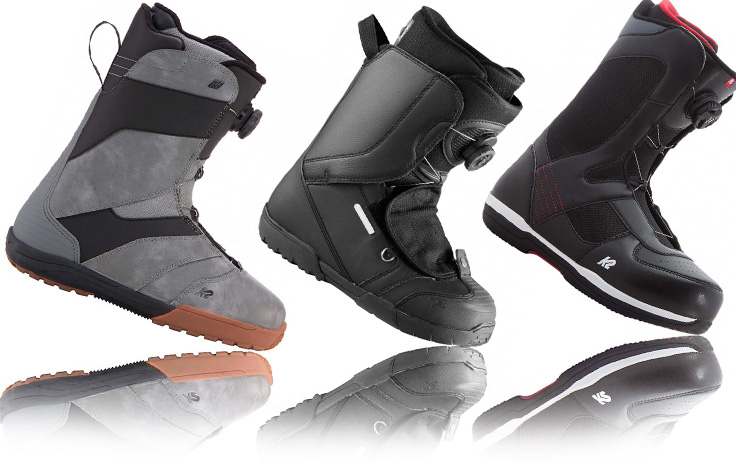Choice of boots
HOW TO CHOOSE THE IDEAL BOOT
Boots are the most important component of your equipment.
Like ski boots, they are the link between your support and your body and translate your intentions to your snowboard. It is therefore important to have a precise fit to promote control and performance.
They should be comfortable, fit your foot and the bindings well.
To select the size and shape that will best suit your feet and technique, you need to determine the following:
- Size
- Fit
- Flex
- Clamping systems
- Slippers
- Soles
SIZE
Sizes may vary by manufacturer or model. There are also specially designed boots with a narrow profile to allow the snowboarder to use a narrower board. The ramp angle on snowboard bindings also determines the size of boots you can put on a snowboard.
As far as compatibility with your snowboard is concerned, the size of your boot is important to consider. People with larger (11.5+) and smaller (<7) sizes will need to buy specific boards, either wider or narrower.
Please refer to our sizing guide above:
Size (US Men's) |
<8 |
8 - 10 |
10 - 11.5 |
11,5+ |
Width (mm) |
<245 |
246 - 254 |
255 - 259 |
260+ |
Snowboard width |
Narrow |
Ordinary |
Mid-Wide |
Large |
FIT/SHAPE
The boots should fit snugly and support the ankle properly, but you should not be in pain. Most boots need several days of use to find their shape, and therefore need to be fairly tight at the time of fitting.
You should be able to move your toes inside the boots. When your knee is pulled forward, your heel should remain in place. This is important to have good control in turns.
NOTE: Socks are very important, without a special sock the boots will not be as effective. Choose a sock with fine to medium wool or silk.
FLEX
Snowboard boots have different flexes, ranging from soft to hard. The choice of the flex is based on your personal preferences.
However, a soft flex is ideal for the park and for beginners. For advanced snowboarders, and freeriders, prefer a rigid flex. The flex is made on a scale from 1 to 10. 1 being the softest and 10 being the stiffest. Generally, 1-2 is a soft flex, 3-5 medium, 6-8 stiff and 9-10 very stiff.
CLAMPING SYSTEMS
TRADITIONAL LACE-UP
Traditional laces allow for hand tightening and offer a customizable fit. Easy to use, but they can be cold and stiff on your hands in harsh winter weather. Despite this, many snowboarders adhere to this classic system for easy lace replacement and a custom fit.

QUICK-PULL LACING
Faster than traditional lacing systems. The quick-pull lacing system allows the forefoot and ankle to be adjusted independently of each other, known as zonal lacing. This type of lacing system is quick, easy and can be tightened while wearing gloves.

BOA® LACING

Boa® lacing systems offer a quick and easy fit. Boa® systems use a ratchet dial attached to a cable. Turning and locking can be done with one hand and also with gloves. Often double or even triple, with one knob controlling the tightness of the forefoot and one or two controlling the upper elasticity.
All Boa® lacing systems:
Boa® |
Central, fast Boa® on start-up language |
Double Boa® |
Boa® on the sides of the shoe for tightening the upper and lower area |
Triple Boa® |
2 external ones for tightening the upper and lower area and a third coil adjusts the lining |
LINER
The liner is the inner shoe of the boot and is often made of a lightweight, mouldable material called EVA (Ethylene Vinyl Acetate). The surface is an important aspect, as it provides the cushioning, stability and insulation you need. Some liners are removable, to speed up drying out of the boots, but it is best not to put it in the washing machine or directly on a radiator to avoid deforming it.
Types of surface:
Liner |
Provides cushioning and stability and adapts to the shape of your foot over time. |
Mouldable liner |
Made of higher end materials, they are designed to mould to the shape of your foot by extending the body heat. |
Heat-mouldable coatings |
Offers a true custom fit for your feet. The heat moulding process is carried out by professionals. |
INSOLES
Classic insoles or orthotics can be used to increase the comfort level of your foot in your snowboard boots. To choose an appropriate insole for your foot shape and size, see a bootfitter or shop adviser.
